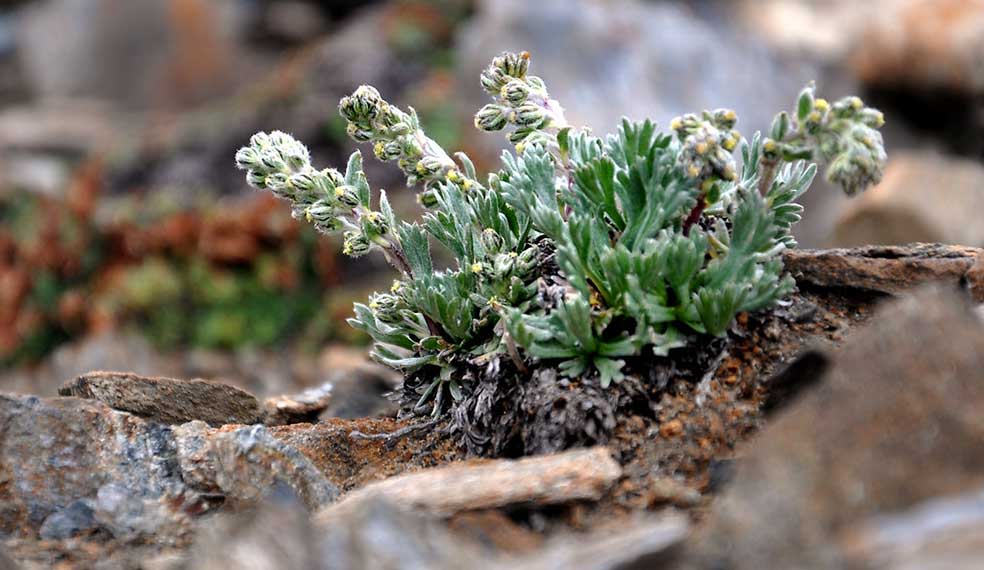I must admit to being a bit of a génépi fan, although appreciate that it is not for everyone. Some will be enthusiastic, others not. It is one of those ‘love it or hate it’ flavours. You will guess in which camp I pitch my tent from the fact I am writing about it at all. A visit over the border from Zermatt to Cervinia might be inspired not merely by the seafood pasta at Etoile but in pursuit of a sip of this hymn to the mountains in a tiny glass.
Everything about génépi is about the mountains. It might be health-giving with claims to aid digestion, to treat wounds when soaked in a poultice and to lessen the ill-effects of altitude. But it has its dangers, both harvesting the base ingredient and drinking it. In its purest form, the plant from which it derives grows on precipitous scree slopes. And with a deceptively high alcoholic content, imbibing much more than that tiny glass carries its own risks. To be treated with respect!
That elusive base ingredient is a determined little flower. The genus is Artemisia family, in English “wormwood”. Artemisia glacialis stubbornly grows at a height of between 2000m and 3100m. Collecting the flowers requires experience in the mountains and a head for heights. It is also highly protected. In Aosta, each harvester may collect a maximum of 100 flowers a day, which would translate into about 2 ½ litres of the final product. Guards are on patrol to fine smugglers whose backpacks are filled beyond their quota. When you think about it, over-harvesting, like over-fishing, needs that sort of regulation. This is a precious bloom that must self-propagate.
An infusion of so evasive a plant is not poured, of course, from every bottle. You can get a great génépi with a less lofty pedigree, although it is still hardly mass produced. Another variation of the family, Artemisia umbelliformis, can be cultivated, although it is pernickety about its conditions. It does not have to be high mountains but some altitude is still important. Processing must be more artisanal that mechanised. The aromatic flower heads are gently picked and carefully selected, steeped for several days in a strong, clear, pure grain alcohol before a precise amount of sugar is added.
Génépi is naturally pale gold but some varieties have a final maceration of the plant that adds a light green hue to the finished product. Brighter green concoctions tend to be the result of food colouring, but the shade of green can be down the amount of chlorophyll there happened to be in each flower chosen. It’s a delicate business for a hardy flower that creates a rather compelling little concoction.
There are some delightful restaurants in quieter places like Val Tournenche where, if you show an appreciation and have a chat to the patron, you might be privileged to explore beyond the menu. They might have their choice bottles stowed in the cellar, carefully made according to recipes handed down for generations. The taste of the high mountains.






